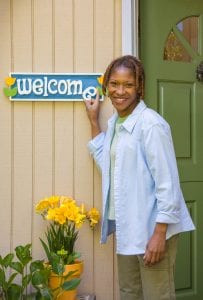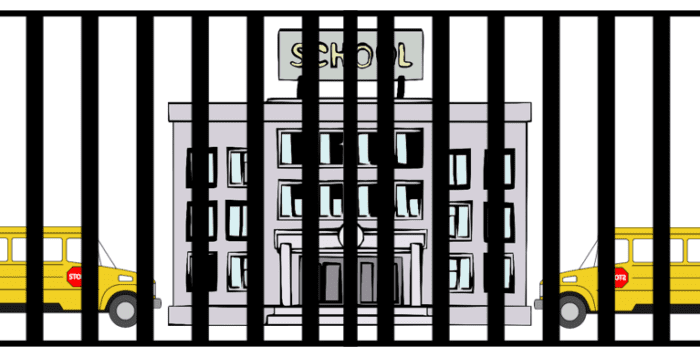By Nancy Marr
The year 2020 in New York State began with excitement about voting access and modernization. Governor Cuomo had signed the bill for 9 days of early voting in November 2019 and New York voters embraced it.
We synchronized federal, state and local primary elections to reduce costs and encourage greater turnout. Young people can pre-register at ages sixteen and seventeen with automatic registration when they turn eighteen. Voters who move within the state will have their registration go with them seamlessly. We also closed the LLC Loophole, meaning that an LLC’s political spending was limited to the same amount allowed to corporations, $5,000 annually. We expected to see the fruit of these efforts this year.
Then, starting in March, we saw the threat of the pandemic on voter safety. After declaring a state of emergency, Gov. Cuomo ordered the presidential primaries postponed from April 28 to June 23 (already the date of state and local primaries) and then ordered Boards of Elections to send Absentee Ballot (AB) applications to all voters in New York State eligible to vote in a primary.
There was great confusion since some voters had already mailed individual AB applications, and those were different from the mass-mailed applications. The NYS Board of Elections announced cancellation of the Democratic presidential primary due to pandemic fears. Then a court declared that cancellation invalid, and the primary was back on. This caused the absentee ballots to be on two pages (presidential on one, other offices on another page) resulting in some eligible voters not receiving both ballot pages.
A huge number of people in Suffolk County applied for Absentee Ballots (more than double the in-person number of voters) and counting mailed in ballots could only begin on July 1 and was expected to end on July 9. Our media didn’t help either; readers were told which candidates were “leading” after the relatively small number of in-person votes were counted on election night (in CD1’s Democratic primary, about 15,000).
As if that amount of confusion couldn’t be any worse, due to the virus a very large number of poll workers chose not to work on election day, regular polling sites refused to be hosts and the Suffolk Board of Elections reduced the actual number of polling places on June 23 by almost two-thirds.
Letters were mailed to voters just before election day, but chaos resulted, including removing neighborhood polling places in communities where transportation was a challenge as well as communities of color. Signage was poor or non-existent in new locations and many places were hard to find.
Voters in New York State have traditionally felt that although we had antiquated aspects to our elections (no early voting, no “no excuse” absentee ballots, no same-day voter registration, and terrible voter turnout) we were in pretty good shape compared to other states that were suppressing the vote. Our blinders have now been removed and much work needs to be done, quickly and thoughtfully, in order to assure a fair, secure, auditable, inclusive and clear process on Nov. 3.
Your voice counts as much as your vote. The New York State Legislature has already closed its session, but the Governor can bring them back. We need money allocated to the Boards of Elections to ensure the Nov. 3 elections are perceived by all voters as valid and reflective of all those who voted.
Study media writeups of the June 23 results during July, learn from them, and in the fall help spread nonpartisan communication about the process. The League of Women Voters’ voter information website, www.VOTE411.org. is a great starting point to see if a voter is registered, learn who is on their ballot, and understand election law and changes in their state.
Threats to the viability of the United State Postal Service will be an issue if the November election is deemed not safe enough for in-person voting. Congress must act immediately to fix the Postal Accountability and Enhancement Act (PAEA) which required the USPS to create a $72 billion fund to pay for the cost of its post-retirement health care costs, 75 years into the future. This burden applies to no other federal agency or private corporation.
Nancy Marr is first vice president of the League of Women Voters of Suffolk County, a nonprofit, nonpartisan organization that encourages the informed and active participation of citizens in government and influences public policy through education and advocacy. For more information, visit www.lwv-suffolkcounty.org or call 631-862-6860.




 Blatant discrimination began to give way to steering; black house hunters were shown homes only in minority or integrated areas while whites were shown houses in overwhelmingly white areas. As people of color began to buy homes in mostly white areas, block busting by real estate brokers took advantage of the situation by scaring white homeowners into selling their homes at lowered prices.
Blatant discrimination began to give way to steering; black house hunters were shown homes only in minority or integrated areas while whites were shown houses in overwhelmingly white areas. As people of color began to buy homes in mostly white areas, block busting by real estate brokers took advantage of the situation by scaring white homeowners into selling their homes at lowered prices.






 Thus when the new Rails to Trails group needed “persons of interest” to attend official government meetings, or informed residents to speak at community meetings, skilled home-grown activists were well-established and ready to work together on this ambitious goal. But advocates also knew that they needed an engaged local elected official who could help navigate the system and secure government support. When Sarah Anker (D-Mount Sinai) became a Suffolk County legislator in 2011, this trail became a legislative goal.
Thus when the new Rails to Trails group needed “persons of interest” to attend official government meetings, or informed residents to speak at community meetings, skilled home-grown activists were well-established and ready to work together on this ambitious goal. But advocates also knew that they needed an engaged local elected official who could help navigate the system and secure government support. When Sarah Anker (D-Mount Sinai) became a Suffolk County legislator in 2011, this trail became a legislative goal.


